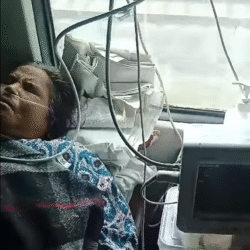Caring for elderly individuals, particularly those with conditions like Alzheimer’s or dementia, requires not only compassion but also practical solutions that enhance safety. One such solution is the wandering alert system, an essential tool for preventing dangerous wandering episodes. As caregivers and facilities strive to provide the best care, it is critical to understand the different types of wandering alert systems available and how to select the right one. This guide will walk you through the factors to consider when choosing a patient wandering alert system, focusing on sensor mats, pressure mats, and their application in Alzheimer’s and dementia care.
1. Understanding Wandering in Dementia and Alzheimer’s Care
For individuals suffering from dementia or Alzheimer’s, wandering can pose significant risks, including falls, injuries, or becoming lost. The cognitive decline caused by these conditions often leads to confusion and a desire to leave a familiar environment, even if it’s dangerous. This is where wandering alert systems come in—acting as an early detection system to alert caregivers or facilities when a patient attempts to wander away.
Wandering alerts are not just safety devices; they play an important role in enhancing the quality of care by providing peace of mind. Facilities, in particular, need to integrate these systems to create a safer environment. A wandering alarm system can help prevent unexpected escapes or unsafe movements, ensuring timely intervention and support.
2. How a Wandering Alert System Works
At its core, a wandering alert system is designed to detect when an individual moves outside a designated safe area. These systems often work by integrating sensors, such as pressure mats, that trigger an alarm when pressure is applied. For example, a sensor mat placed at the bedside or in doorways will alert caregivers when a person steps off the mat, signaling an attempt to stand or move.
Pressure mats are often used in conjunction with other monitoring systems, such as door alarms or wristbands, to enhance the reliability of the alert. These systems are designed to be non-intrusive, allowing patients to maintain their independence while providing caregivers with the information they need to respond quickly.
3. Sensor Mat vs. Pressure Mat: Which is Right for Your Needs?
When considering a wandering alert system, caregivers must choose between different types of mats. The two most common are sensor mats and pressure mats. Both types serve the same purpose but function in slightly different ways.
-
Sensor Mat: A sensor mat for the elderly detects movement or changes in pressure when someone steps on it. This type of mat is often used for patients who are prone to sudden movements or attempting to get out of bed during the night. Sensor mats are generally placed near the bed or chair and are known for their reliability in detecting any pressure change.
-
Pressure Mat: A pressure mat elderly individuals can use is a similar concept but typically more focused on detecting heavier pressure or force. These mats may be used for individuals who may apply more pressure when standing or sitting. They can be placed on floors near exits or pathways to monitor a patient’s movements.
Choosing the right type of mat depends largely on the patient’s mobility and tendencies. A sensor mat may be better suited for a more mobile individual, while a pressure mat might be more appropriate for someone who is less mobile or requires more support when standing.
4. The Benefits of Using Wandering Alert Systems
The primary benefit of using a wandering alert system is increased safety. By alerting caregivers to a potential wandering incident before it becomes a danger, these systems prevent falls, injuries, and even life-threatening situations. Beyond safety, there are several other benefits:
-
Peace of Mind: Caregivers can rest assured knowing that the system will notify them of any movement, especially during the night when wandering is more likely.
-
Independence for the Patient: With the right wandering alert system in place, patients can maintain their independence. They are less likely to be confined to a room with constant supervision.
-
Easy Integration: Many systems are designed to integrate with existing caregiving practices and facilities’ infrastructure. This ensures seamless monitoring without disrupting routines.
5. Important Features to Look for in a Wandering Alert System
Not all wandering alert systems are created equal, and it’s important to look for certain features that can enhance their effectiveness. Here are some key features to consider:
-
Sensitivity and Range: A system should be sensitive enough to detect the slightest movement. Additionally, the range of the system should cover the entire area that needs monitoring, whether it’s the bed, the room, or an entire hallway.
-
Multiple Alert Options: Choose a system that offers multiple alert mechanisms, such as audio, visual, and even text notifications. This ensures that caregivers are always aware of an alert, no matter where they are.
-
Easy Setup and Maintenance: The system should be easy to set up and maintain, particularly for busy caregivers. Wireless models or ones that require minimal wiring may be ideal.
-
Comfort: The alert system should be unobtrusive. For example, pressure mats or sensor mats should be comfortable for the elderly user to walk on or lie next to without causing discomfort.
6. Alzheimer’s Care Products and Wandering Alert Systems
For facilities that cater to Alzheimer’s patients, integrating wandering alert systems with other Alzheimer’s care products is essential. Alzheimer’s care products, such as memory aids and environmental modifications, should work in tandem with wandering alert systems to create a comprehensive safety plan.
For example, some systems offer alerts that are customizable based on the individual’s behaviors and tendencies. In these cases, caregivers can set up the system to alert them when a patient is moving towards a door or exit. This kind of customization is particularly useful in dementia care, where one-size-fits-all solutions rarely work.
7. How to Choose the Right Wandering Alert System for a Facility
When selecting a wandering alert system for a facility, there are several factors to consider:
-
Size of the Facility: Larger facilities may require a more extensive system that can cover multiple areas or rooms. In this case, a network of sensor mats and door alarms may be needed.
-
Patient Needs: Some patients may need more comprehensive monitoring than others. Those with advanced stages of dementia or Alzheimer’s may require more frequent monitoring and more robust systems.
-
Integration with Existing Systems: Many facilities already have other monitoring or security systems in place. The wandering alert system should be compatible with these systems to ensure smooth operations.
-
Training and Support: Staff training is crucial for the successful implementation of any alert system. Look for a system that comes with training resources and technical support to ensure caregivers can fully utilize the system.
8. Cost Considerations: Are Wandering Alert Systems Worth the Investment?
The cost of a patient wandering alert system can vary depending on the complexity and features of the system. While the upfront investment may seem significant, the benefits far outweigh the costs. The peace of mind that comes from knowing a loved one or patient is safe is invaluable.
Furthermore, preventing wandering-related accidents can help avoid costly hospitalizations or legal expenses related to negligence. For facilities, the right wandering alert system can also help reduce liability and improve the overall care provided to residents.
9. Conclusion: Selecting the Best Wandering Alert System for Caregivers and Facilities
Choosing the right wandering alert system is a vital decision for caregivers and facilities that support elderly individuals, particularly those with dementia or Alzheimer’s. By considering factors such as the type of mat (sensor vs. pressure), features, ease of integration, and cost, you can ensure that you select a system that best meets the needs of the patient and the facility.
Ultimately, a reliable wandering alert system enhances safety, reduces caregiver stress, and contributes to the overall well-being of patients. It is an investment that not only protects but also empowers both caregivers and patients, allowing for a higher quality of life.


